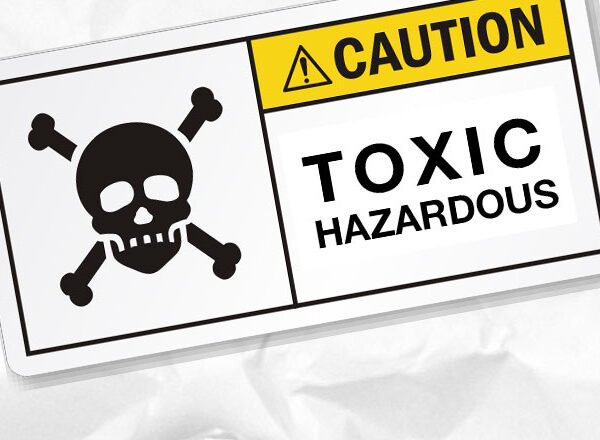The Toxicity of Solvents: A Closer Look at Why Most Solvents Are Harmful!
In my current research, I frequently use n-hexane as a solvent to mix the components in my experiments. While it is effective for this purpose, I am always mindful of its toxicity.

I’ve no idea about other people, but for me, I always have the intention to drink a cup of n-hexane. It’s like when someone asks you to mind the bad smell, the first reaction for me is not to cover my nose but to take a deep breath 😬. So I always need to remind myself — it’s dangerous when doing experiments.
N-Hexane is known to be neurotoxic, fertility-affecting, and prolonged exposure can cause nerve damage, particularly to the extremities. This poses a significant concern for me as I handle the solvent regularly in my work. (I really hope I can quickly finish this part of work….)
🧪 What is a Solvent?
A solvent is a substance that dissolves a solute, forming a solution. Solvents are widely used in chemical synthesis, industrial applications, and scientific research. A good solvent should have:
- High solubility for the intended solute.
- Volatility for easy removal after use.
- Chemical stability under reaction conditions.
- Low toxicity (but in reality, most common solvents are hazardous).
☠️ What Makes a Solvent Toxic?
The toxicity of solvents often arises from their chemical properties [1]:
- Volatility & Inhalation Risk – Many solvents evaporate quickly, making it easy to inhale toxic vapors (e.g., benzene, n-hexane).
- Lipid Solubility & Bioaccumulation – Solvents like to dissolve in fat tissues, making them accumulate in the nervous system and organs.
- Metabolic Byproducts – Some solvents (e.g., methanol) are metabolized into more toxic substances in the body.
- Neurotoxicity – Long-term exposure can damage the nervous system, leading to symptoms like dizziness, tremors, and neuropathy.
- Carcinogenicity – Some solvents (e.g., benzene) are known to cause cancer with prolonged exposure.
🔬 Common Solvents and Their Toxicity [2].
| Solvent | Common Use | Toxicity Concerns |
|---|---|---|
| N-Hexane(正己烷) | Adhesives, extractions, research | Neurotoxic, affects nerves and fertility |
| Toluene(甲苯) | Paints, coatings, adhesives | CNS (central nervous system) depression, liver & kidney damage |
| Methanol(甲醇) | Lab solvent, fuel, antifreeze | Metabolized to formaldehyde, blindness risk |
| Benzene(笨) | Industrial processes, fuels | Carcinogenic, bone marrow suppression |
| Acetone(丙酮) | Nail polish remover, cleaning | Irritating, but relatively safer than others |
| Chloroform(氯仿) | Old anesthetic, solvent | Liver damage, suspected carcinogen |
🛡️ How to Minimize Solvent Hazards
1️⃣ Use Proper Ventilation
- Always work in a fume hood to prevent inhalation.
- Avoid working in enclosed spaces with volatile solvents.
2️⃣ Personal Protective Equipment (PPE)
- Wear nitrile gloves (some solvents can penetrate latex gloves!).
- Use safety goggles to prevent splashes.
- A proper respirator (e.g., 3M 6092 or 6093 filter) when needed. I ordered 3M 7500 today.
3️⃣ Safe Handling & Storage
- Keep solvents in properly sealed containers.
- Store away from heat sources to prevent evaporation and fire risks.
4️⃣ Minimize Exposure Time
- Plan experiments to reduce direct handling.
- Use safer solvent alternatives when possible.
🎯 Final Thoughts
Solvents are essential in research and industry, but their toxicity cannot be ignored. As someone who works with n-hexane, I have to be extra careful about exposure risks.There are already a lot of researchers focus on developing green solvents [3]. But in my opinion, I hope there shall be some proper robots help us do these kind of experiments in the future..
🔬 Stay safe, and always respect the chemicals you work with!
我可真是惜命啊!!!🫣
References
[1]: Bruckner, James V., S. Satheesh Anand, and D. Alan Warren. “Toxic Effects of Solvents and Vapors: Introduction.” Essentials of Toxicology 2 (2023).
[2]: Joshi, Dirgha Raj, and Nisha Adhikari. “An overview on common organic solvents and their toxicity.” J. Pharm. Res. Int 28.3 (2019): 1-18.
[3]: Jessop, Philip G. “Searching for green solvents.” Green Chemistry 13.6 (2011): 1391-1398.
The Toxicity of Solvents: A Closer Look at Why Most Solvents Are Harmful!



